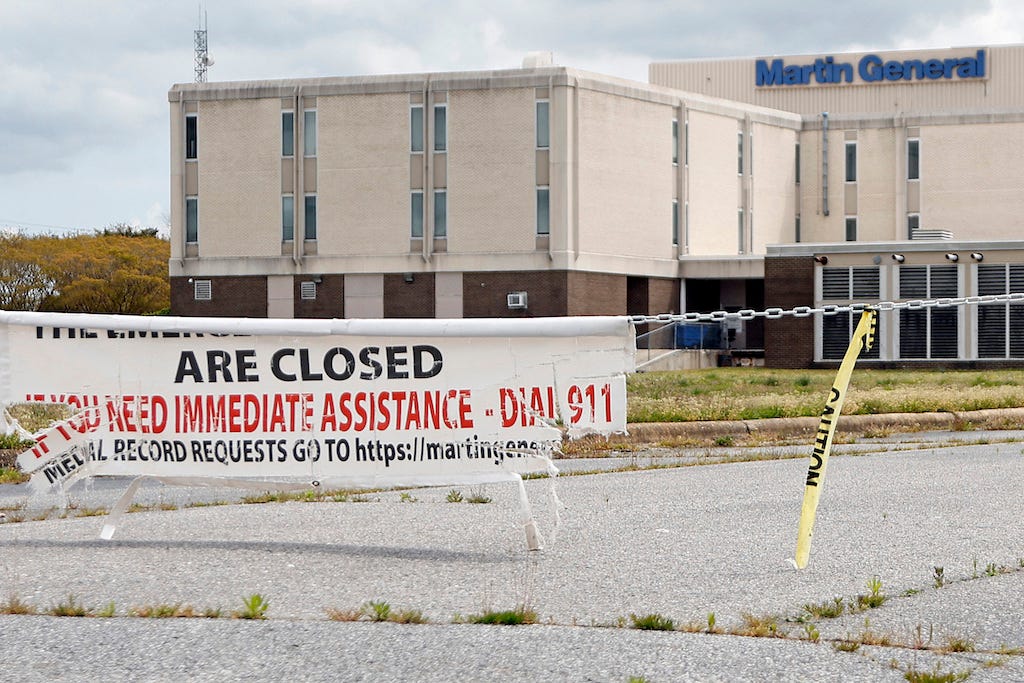The $1 trillion cut in Medicaid spending in the Big Beautiful Bill largely comes from two actions: (1) imposing work requirements on Medicaid recipients and (2) restricting the ability of States to use provider taxes to fund the State responsibility for Medicaid spending. I have already discussed the work requirements in a previous post. Sadly, no Republican Senator seems concerned about the work requirements. Many Republican Senators—including even conservative Senator Josh Hawley—are concerned about the restrictions on provider taxes. Given that this might be a useful talking point in your calls to Senators (and you are calling, right?), I thought you might benefit from a deep dive on the provider tax issue—particularly since its a somewhat complex issue.
I will get into the details below, but the bottom line up front is that the restrictions on provider taxes will force States to make cuts in their Medicaid program by reducing provider payment rates, reducing the amount or scope of covered services and reducing Medicaid enrollment. The Congressional Budget Office estimates that of the 7.8 million people who will lose Medicaid coverage because of the Bill, 2 million would lose coverage because of the provider tax limitations. And the restriction will put a real strain on already strained state budgets.
Sadly, understanding this issue requires a bit of background. Bear with me!
Medicaid is jointly financed by the federal government and the states, with the state share set at 30% (except for the Obamacare Medicaid expansion, which is set at 10%). States finance their share in multiple ways, but with the sole exception of Alaska, all states finance at least part of their Medicaid spending with taxes on health care providers. Out of concern that the provider tax could be a scheme to get more federal dollars without any real contribution by the providers, the federal government has put some limits of the provider tax. Provider taxes are allowed only if they are broad-based (imposed on all providers in a class), uniform (same rate within a class), and they do not hold providers “harmless” (states can’t structure the taxes so that Medicaid revenue to a provider will offset any taxes).
As a way to enforce the “hold harmless” requirement, the federal government has set a “safe harbor”: the hold harmless requirement is deemed satisfied if tax revenues comprise 6% or less of net patient revenues from treating patients.
With the background, I can finally explain what the Senate version of the Big Beautiful bill will do to provider taxes. For States that have expanded Medicaid eligibility (as a result of Obamacare), the safe harbor rate for provider taxes would be lowered from 6% to 3.5%. This change would be phased in, starting in 2027 and hitting the 3.5% limit in 2031. According to the CBO, this results in a cut of $183 billion of federal spending on Medicaid.
As the KFF chart shows, this provision would reduce Medicaid spending in 22 states that have both expanded Medicaid eligibility and have provider taxes in excess of 3.5%. As KFF notes, “Affected states include Arizona, California, Colorado, Connecticut, Illinois, Indiana, Iowa, Louisiana, Michigan, Minnesota, Missouri, Nevada, New Hampshire, New Jersey, New York, Oklahoma, Oregon, Pennsylvania, Rhode Island, Utah, Vermont, and Virginia.”
Notably, almost all of the affected states have provider taxes at 5.5% of patient revenue, so the change in state Medicaid revenue will be significant. The impact would be especially damaging to rural hospitals. States often use provider tax revenue to finance higher payments to hospitals that serve a large number of Medicaid patients, and many of these hospitals are in rural areas. As PBS reported:
States have often used provider taxes to pay hospitals that serve higher numbers of uninsured patients, Burns said. Cutting those taxes could affect rural areas, where many hospitals operate on razor-thin margins, as well as urban areas, which may also see a high percentage of Medicaid patients, Orris said.
“If a hospital is suddenly getting paid less money for every Medicaid patient it sees — and this is particularly the case under the Senate bill — it sort of defies logic to think that that hospital is going to be OK,” she said. “Then when that hospital closes, or needs to close a maternity ward, it’s not just the Medicaid enrollees who suffer. It’s the entire community.
It is understandable that some Republican Senators—particularly those from rural states with community hospitals at great risk—are getting queasy about this provision. They might be receptive to your phone calls and emails on this issue.





So, I’m a nobody but would like some feedback on my understanding of the situation: I’ve gone way down the rabbit hole trying to understand the big beautiful bill’s potential impact on rural hospitals. It seems that most of the harm would come from the ratcheting down of the so-called safe harbor rate discussed above - but that wouldn’t even start until 2027 (notably after the midterm election 🙄) and settling upon a final rate in 2032. If it actually goes through the entire process, the results would be devastating - but I’m half-convinced many of the “yes” votes were made with the assumption that someone more responsible would come along and fix it before it’s too late. With Blue Wave elections in ‘26 and - vitally - ‘28, it might be possible. Otherwise, rural hospitals really might be in major trouble (conveniently after many of the people responsible are no longer around to face the consequences).
Chuck:
Well done! I was not following these impacts. Eye opening.
Joe